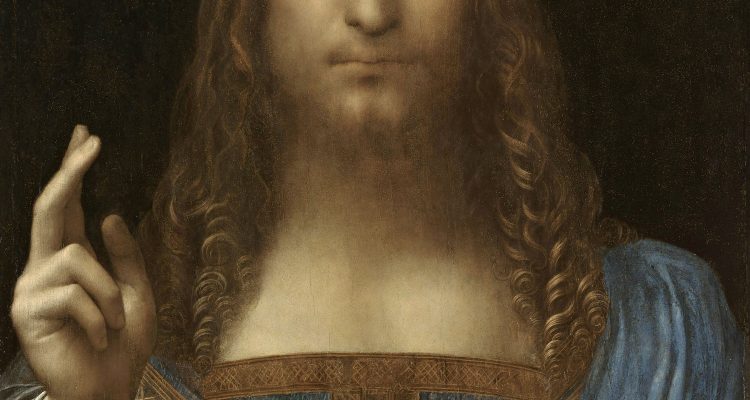Since the time of Leonardo da Vinci, the “Salvator Mundi,” or ‘Savior of the World,’ has been the artist’s most copied work. His pupils and art students created many different versions, but da Vinci’s original remained lost, with no clear work attributable to him.
By the 1980s, one painting was gradually catching the attention of Renaissance scholars who thought they may have found the lost da Vinci piece, though it was damaged and painted over. After an extensive–and controversial–restoration of what was believed to be a copy by a follower of his, leading museums and art historians authenticated it as a da Vinci (some still contest this attribution). After the restoration in 2011, it hung for a year in London’s National Gallery, as well as at institutions across the globe, until 2017 when it was sold for $450.3 million, becoming the most expensive painting ever sold at auction. Although it was bought by a Saudi prince to reside in the newly built Louvre Abu Dhabi in the United Arab Emirates, it never arrived. The museum canceled its unveiling and the artwork is still missing.
The painting depicts Christ, donned in detailed embroidered blue and red robes, giving blessings with his right hand and holding a clear orb, representing the earth, in his left. He stares directly at the viewer and holds an emotionless face, typical of Italian Renaissance art. His hair is long, with tight curls that required fine brushstrokes to paint. He stands alone, with no background, to emphasize Christ’s importance and to suggest that he is in deep connection with his audience.
Of the fewer than 20 works believed to be painted by the hands of Leonardo da Vinci, this would be one of his best. It is relatively complete, something he struggled to do with other works throughout his career. The light and shading of the piece, or chiaroscuro, are expertly done, as da Vinci was a principal developer of the technique. Even the smoothness of Christ’s skin and the detail of his drapery surpass many of da Vinci’s other works.
Due to its considerable beauty and exorbitant selling price, the “Salvator Mundi” is now the third most expensive missing painting in the world, just after Vermeer’s “The Concert” and Rembrandt’s “Storm on the Sea of Galilee,” both stolen from the Isabella Stewart Gardner Museum in Boston in 1990. Rumors continue to circulate about the whereabouts of “Salvator Mundi,” as some believe that the Louvre Abu Dhabi is hiding the work because of proof it does not belong to da Vinci. Others speculate it was accidentally destroyed in transit or by those who truly purchased it. The most prominent theory, however, contends that the prince who purchased the work acted as an intermediary for Crown Prince Mohammad Bin Salman of Saudi Arabia. Reports suggest that he planned on giving it to the museum in the U.A.E., but decided to keep it for himself, and hung it on his yacht sailing the Red Sea.
We still do not know for sure the whereabouts of this work, but we do have hope for its safety. Perhaps it will resurface in the future, either at auction or by donation to a museum, so that the world may view one of the only surviving masterpieces by da Vinci, and one of the most famous paintings in history.


Leave a Reply